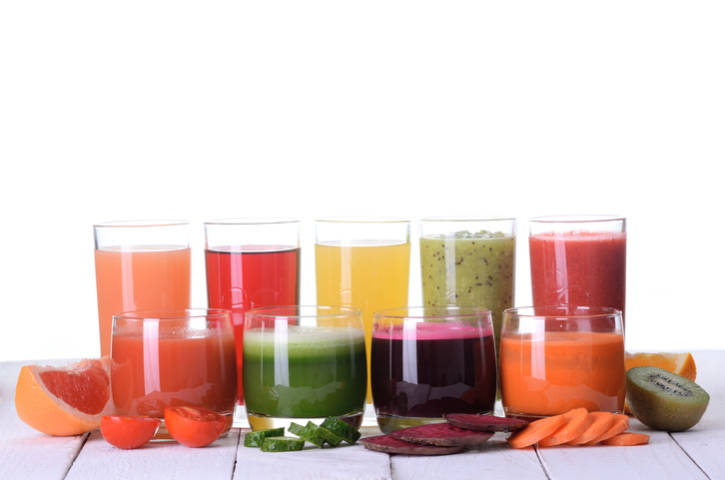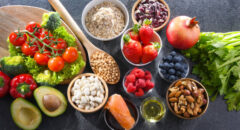 Many people are turning to juicing and making smoothies as a way to detox, slim down or improve their overall health. No doubt, there are a lot of good reasons to juice and make smoothies, especially if you don’t get enough vitamins and minerals in your everyday meals. Before you rev up your blender or juicer, check out the questions below to find out whether juices or smoothies are the right one for you!
Many people are turning to juicing and making smoothies as a way to detox, slim down or improve their overall health. No doubt, there are a lot of good reasons to juice and make smoothies, especially if you don’t get enough vitamins and minerals in your everyday meals. Before you rev up your blender or juicer, check out the questions below to find out whether juices or smoothies are the right one for you!
Juice vs Smoothies: Watching your Weight?
Replacing a daily meal or two with a high-protein green smoothie can bring you some great results—if you do it the right way. People tend to drink smoothies in addition to eating their regular meals, but this can backfire. Depending on the ingredients, smoothies can have more calories than the average meal and two to three times as much sugar as you might get on a normal plate. To counteract this, think of that smoothie as a complete meal. Find ways to balance fruits with veggies and add some protein to get your fill for hours.
Is “Hungry” Your Middle Name?
When you start juicing or making smoothies to replace meals, you might feel like something is missing. Juices especially are not likely to keep you full because you are missing out on all that fiber that keeps your stomach happy (and full). You can switch to smoothies and try to add healthy fats like natural peanut butter, nuts, or good old protein powder.
Fending Off a Sweet Tooth?
If cutting back on sugar is your goal, smoothies and juices can send your sweet tooth off the rails. According to nutrition.gov, both smoothies and juices can be very high in sugar because you are sipping on sweet fruits, rather than chewing them. This means you can pack in upwards of 50-80 grams of sugar if you use mostly fruits in your smoothies or juices. Aim to use more vegetables in your smoothies and juices. When you do use fruits, avoid too many tropical fruits like pineapples, mangoes and bananas, which are the highest in sugar. Dark berries and grapefruit pack the flavor with much less sugar.
Too Busy to Eat Right?
Juicing can work really well for you if you simply don’t have time to eat enough well balanced meals to get the nutrients you need. Whether you’re on a constant time crunch, or you always forget to put veggies on your plate, juicing leafy green veggies at least once a day can pack in what you’re missing with one glass. If the taste of plain veggie juice turns you off, start to sweeten it with lemon or lime.
Stubborn Stomach Issues?
People with certain digestive issues can have trouble…







